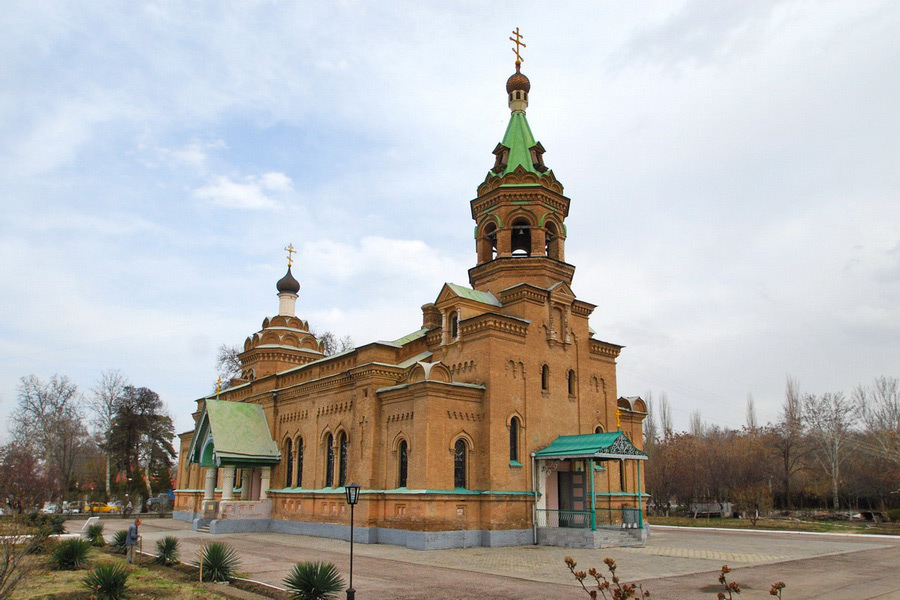Temples of Samarkand

The temples of Samarkand represent a significant part of the city’s historical heritage, highlighting the religious diversity of its communities. When Samarkand became part of the Russian Empire in the 19th century, an influx of Russian military personnel and intellectuals arrived, along with representatives from other nations. This new population led to the construction of prayer houses of various denominations. Today, Samarkand is home to Orthodox, Catholic, and Armenian churches, each serving as both architectural landmarks and spiritual centers for their respective communities.
Orthodox Churches
The Church of St. George the Victorious has a storied history. Founded in the 19th century, it was closed by Soviet authorities in the 1920s and repurposed several times, housing the Union of Writers, an art gallery, and even a small gym. Parishioners were given a nearby chapel, which was eventually lost to fire. In 1937, the Orthodox community bought a private house, transforming it into a place of worship, and eventually, it became a functioning church. The architecture, although not classical, retains many ancient icons preserved by parishioners during the Soviet era. The church has a gate bell tower, holds daily services, and operates a Sunday school for children.
The Church of the Intercession of the Blessed Virgin Mary is the only Orthodox church in modern Uzbekistan that was never closed, even during the harshest periods of persecution. Consecrated in 1903, it remains largely unchanged. From its early days, the church housed a parish school, with a local legend stating that the main donors for its construction were a noble couple without children who wanted to support future generations. The church features a massive bell tower adorned with a mosaic of the Virgin Mary.
The Cathedral of St. Alexis, Metropolitan of Moscow was the last Orthodox church built in Samarkand under the Russian Empire, with plans personally approved by Emperor Nicholas Romanov. Established for the Orthodox military due to overcrowded services in existing churches, St. Alexis Cathedral offered ample space. Closed after the revolution, it was returned to worshippers in the 1990s and consecrated by Patriarch Alexy II in 1996. Its dome boasts a spacious hall without columns, providing exceptional acoustics, and can accommodate up to 60 singers.
Armenian Temple
The Church of St. Astvatsatsin (Holy Mother of God) was built for the Armenian Apostolic Church community in 1903. It serves as both a religious and cultural center for Samarkand’s Armenians. Closed in 1939 by local authorities, the church was restored in the 1990s with funds from the community. In 1995, the church was reconsecrated in a ceremony attended by a delegation from Armenia, led by Archbishop Nerses Pozapalyan. Today, the Armenian center “Luys” operates on the premises, offering free Armenian and English language lessons and chess classes on Sundays.
Catholic Church
St. John the Baptist Church is Samarkand's sole Catholic church, built in 1916 for Austrian-Hungarian prisoners of war sent to Central Asia by the Russian Empire. The church provided a place of prayer and helped European soldiers adapt to life in a foreign land. During the Soviet period, it was closed, only reopening in 1997. The church features a modest interior with neo-Gothic architecture, decorated with expressive details such as arches, a delicate choir balcony lattice, and an ornate entrance portal. Stained glass windows depict biblical scenes, and the structure is crowned with a high bell tower adorned with brick ornamentation.
Explore these temples of Samarkand, which stand not only as architectural treasures but also as enduring symbols of the city’s diverse spiritual and cultural life.

